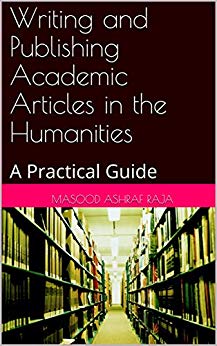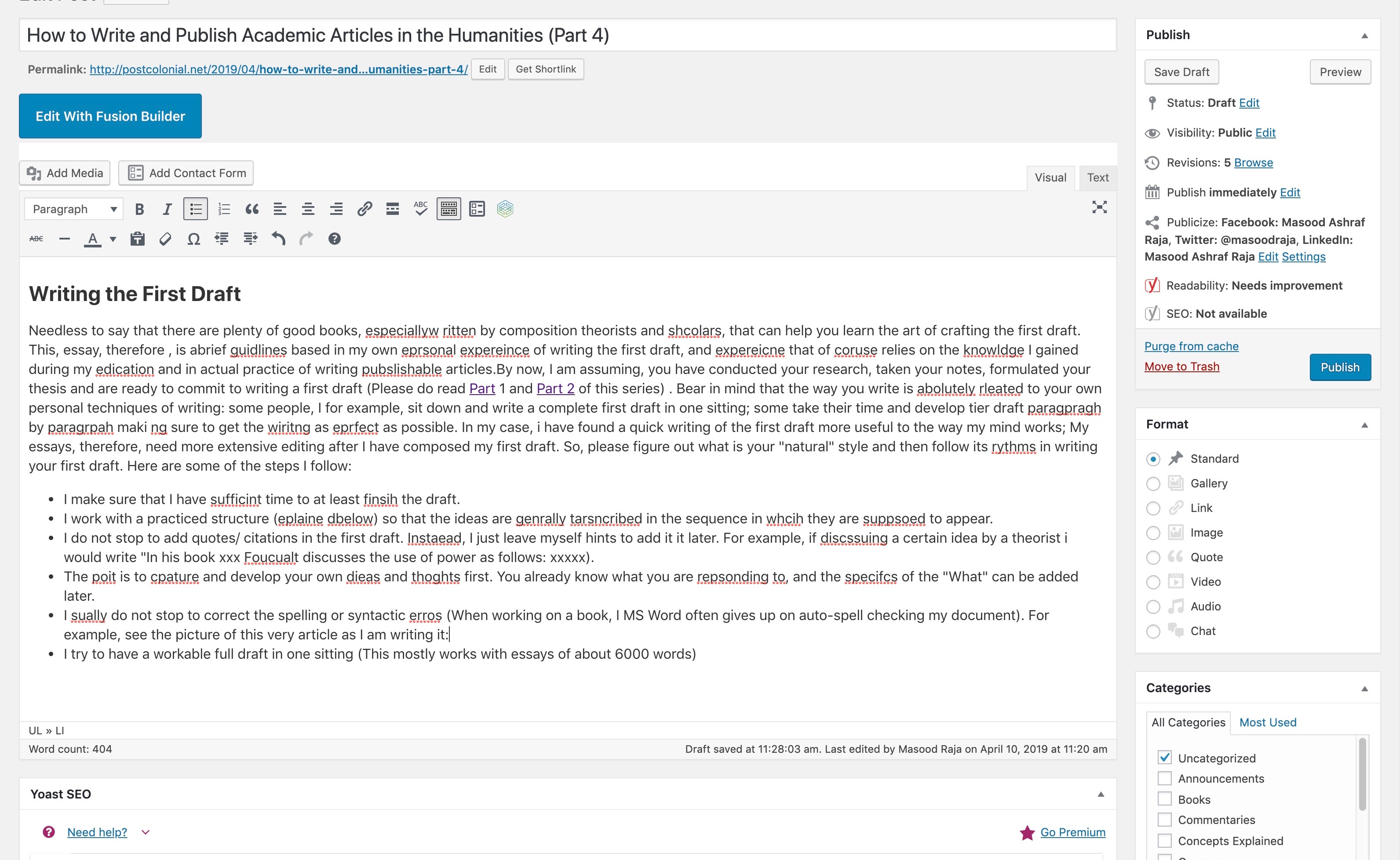Submitting Your Essay
Finding the Right Journal
Now that you have revised and finalized your paper, it is time to submit It to a reputable peer-reviewed journal. How do we know which journal to submit our articles to and whether or not the journal we have chosen is a real journal and not a predatory publishing mill?
Of course, the main journals in your field would be pretty obvious. For example, here in the US journals such as PMLA, Victorian Studies, and other journals associated with a university, corporate academic publishers (like Taylor and Francis or Springer), journals published by academic associations are pretty well-known. Another way of finding out the reputation of a journal is by looking up if the journal is indexed in the MLA Directory of Periodicals. Of course, you can also ask your mentors and colleagues about where to submit your articles.
Avoid predatory/ Deceptive Journals
As for predatory journals, it is always better to do your research. There used to be a running list of predatory journals maintained by a librarian, but that list was taken down after fear of legal reprisals. But you can still use some of the following criteria to figure out if it is a fake journal:
- You recently presented at a conference and you receive a badly composed email asking you to submit your article.
- The journal charges a publication processing fee. Note, while subventions is often part of scientific and some social sciences journals, humanities journals generally do not charge a publication fee.
- The journal website has obvious stylistic and spelling errors and does not list an editorial board, editorial team, or explain their professional affiliation with an association or a university.
- If they offer to publish your paper without the review process.
- If you cannot find any details about people listed as editors or members of editorial board.
Follow the Journal’s House Style
So, let us assume you have surfed the web and asked around, and now have a list of possible journals. Now, the topic or subject of your paper will further refine your list, for you still need to submit your article to a journal that publishes on the subject that you have chosen for your paper. After you have reached your final short list of journals, it is now time to revise your article according to the house style of your selected journal. You may also want to browse the journals table of content to see what kind of papers they have previously published.
Most journals explain their house style on the Author Guidelines or Submission Guidelines page. Please read those instructions and follow them throughout the process. Here are some of things usually listed under author guidelines:
- Whether or not the journal accepts simultaneous submissions.
- The preferred citation style of the journal.
- The format in which they want the article.
- Blind peer review requirements.
- The likely time required for review.
- The submission and editing process
Submitting the Paper
After you have revised the paper according to the author guidelines of your chosen journal, it is now time to actually submit it. If the paper accepts online submissions, then please follow the online instructions. Pakistani scholars, please note that most US journals require US Letter size for your pages and not A4, so please make sure to format accordingly. If they require you to send hard copies, then please mail the hard copies to the specific editor or to the address listed for submissions.
The Review Process
If you submitted online, you will probably get an immediate confirmation message and you will probably also be able to track your article through your online account with the journal.
After the editors receive your submission, they will send it out to at least two reviewers. Some journals may also first do an in-house review before sending your article to reviews. This practice allows the editors to decide whether or not it is worth their while to invest time and resources in conducting the review. Chances are, if your article does not meet the journals criteria, is not ready for review, or is on a hackneyed topic, the editors will let you know pretty soon that they will not be sending it out for review. Most journals, however, automatically start the review process after an article is submitted.
Editing After Reviews
So, you have waited from three to, sometimes six, months and have now received your reviews:
Most reviewers are requested to give substantial comments and they choose one of the following recommendations:
- Accept without revisions
- Accept with minor revisions
- Accept with substantive revisions
- Revise and Resubmit
- Reject
The no 1 rarely happens and has never happened to me. No 2 happens when the reviewers find your topic compelling enough to suggest that even though the essay needs a little bit of editing, it can be published after addressing some minor issues. Number 3 happens when your essay is about a promising and original topic and hence worthy of publication after some major changes are made. No 4 implies that your essay requires revisions of the kind that would need another round of review, probably by the same reviewers. And of course we all know No 5, for who has not received a polite rejection message in their academic life. Needless to say, it is always prudent to agree to revise.
To revise, please read the reviews carefully and highlight what the reviewers have pointed out. Then deal with each issue carefully and revise. If you decide not to incorporate any suggestions, please compose your reason separately so that you can add it to your letter to editor.
Note: a “revise and resubmit” is not a rejection: it still is a chance at publication so you should never give up on the essay.
After you have edited the paper, it is better if you share your revised essay with a friend or a colleague. Before you send the revised essay back, please also compose a letter explaining your revisions. In this letter, please explain how you have dealt with each issue raised by each reviewer. I always divide my letter into two parts, Reviewer 1 and Reviewer 2, and then address each reviewer’s concerns separately.
Now, you are ready to send your revised article back!
Copyediting and Proofreading
A well-run journal will always assign your paper to a copyeditor or a line editor and will never make any changes without your consent. After the copyeditor has gone through your paper, he or she will send it back to you with suggested corrections and comments. Please read carefully, accept or reject changes, respond to comments and send the paper back in a timely fashion. This is also the last stage where you can still make some extensive changes, like revising a sentence or rearranging a paragraph. So, be diligent and deliberate.
Proofreading and Publication
After the copyediting has been finalized, the editor will send your article to the layout editor. The latter will make the galleys and send them to you for final proofreading. This stage is not meant for substantial changes but only to correct any typos or spelling errors. Please read carefully, for this is almost the final version of your article.
Note you cannot make changes directly to a galley. You will have to write a note. For sample:
- On page 9, line 8 Change “far” to “for”
- Page 10, footnote 11, line 2, replace “Saeed” with “Said”
Generally, this would be the format for any corrections that you might request. After the proofread file is back, the editor will schedule your article for publication and soon, after all your hard work, your article will be published!!!
Note: This entire write up is now also available as a Kindle Book.
Please feel free to suggest any changes and share your own experiences in the comment section below.
Please also read the previous parts of this series.



Assalamoaleikum Dr Raja
Thank you so much for this great opportunity. I have shared it with my students’ groups also so that they may also benefit from a great name like yourself.
I suggest if you possibly can add some points of using Microsoft built in documentation technique. That would be really helpful.
Thank you. All four parts are also now available as a collated article: https://postcolonial.net/2019/04/how-to-write-and-publish-academic-articles-in-the-humanities-part-1-4/
[…] I wrote a series of blogs about academic publishing in humanities. These articles did not dwell much on the nitty gritty […]
[…] Home/How to Write and Publish Academic Articles in the Humanities (Part 3) Previous Next […]
Dear Dr. Tauseef. Thank you so much. I hope it is useful for your students. Please feel free to use it in your classes.
Salam Prof. Masood Sb.
I have read, with great interest, all the 4 parts. I found them very helpful. JazakAllahU Khayr!!
They are so informative that I have saved them in their serial order on my desktop